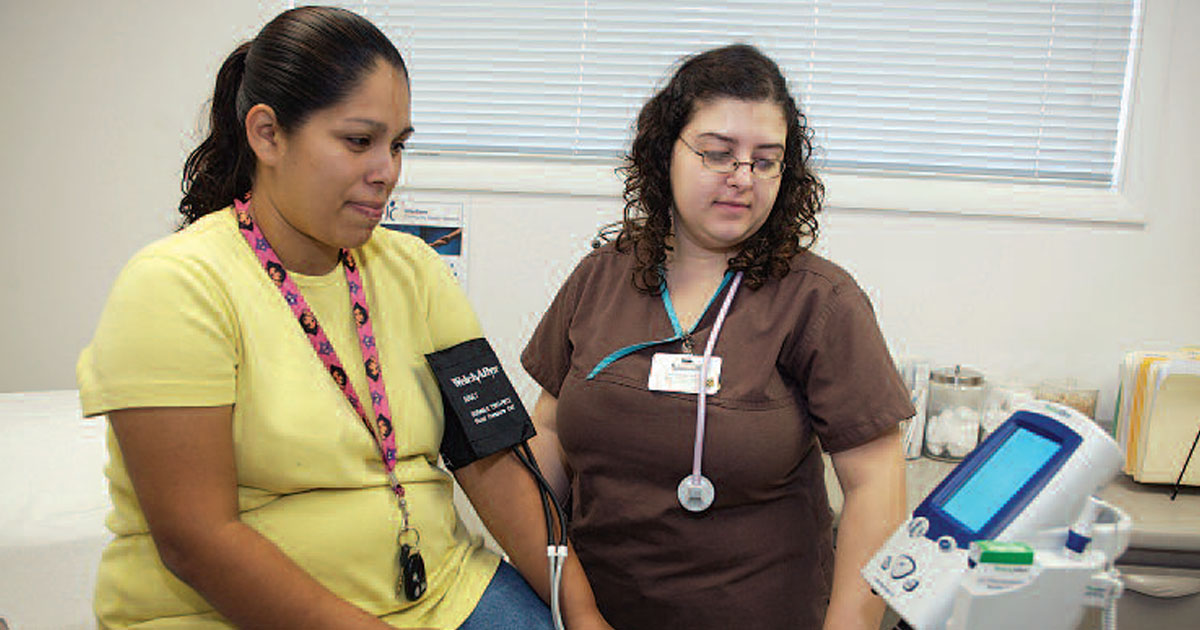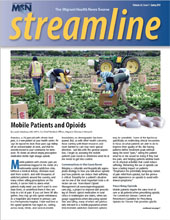
Last year, Honesto Silvo Ibarra, 28, was working in blueberry fields through an H2A guest worker visa in Washington State near the Canadian border when he fell ill. He died days later in a nearby hospital after suffering cardiac arrest. Ibarra’s death sparked protests by fellow workers of poor treatment, and led to state and federal investigations and a recently filed federal lawsuit. The King County Medical Examiner determined Silva’s cause of death was related to complications from diabetes.1
Many occupational hazards may have factored into Ibarra’s death. Ibarra and dozens of other workers on the farm that week were working in poor air quality, listed as “unhealthy,” as a result of smoke from distant wildfires. Temperatures were soaring, fields were in full sun, and workers were putting in 12-hour shifts. The federal lawsuit claims that H-2A workers on the farm were not supplied adequate water or given shade and that several workers were suffering from heat stress. Additionally, the lawsuit states that the workers were provided with “inadequate and unhealthy food.”2
Ibarra’s untimely and unnecessary death is a stark and tragic reminder that diabetes is an occupational health concern among agricultural workers. Excessive heat and/or long hours in a hot work environment may affect blood glucose levels or affect the absorption of some diabetic medications. Additionally, poor air quality from particulate matter like smoke increases the risk of cardiovascular problems among people with diabetes.3
In H-2A or other agricultural worker situations, food, housing, and other lifestyle factors are often provided, increasing the occupational risks for workers suffering diabetes. Insufficient or the wrong type of food, and housing that continues a worker’s exposure to high heat or humidity after work ends, may each contribute to hyper- or hypoglycemic episodes. Improper storage of medications may affect their efficacy.
“In order for injectable diabetic medication like insulin to be effective, it has to be stored refrigerated,” noted Laszlo Madaras, MD, MPH, Co-Chief Medical Officer at MCN. “This may be a challenge to mobile populations who work in the heat, since even a short disruption in the cold chain could jeopardize their insulin effectiveness.”
Additionally, long work hours, fear of retaliation from the workplace, and, for the mobile workers, unfamiliarity with the community, may result in poor access to health care, which may lead workers to ignore critical health cues or miss prescription refills.
“Diabetes is becoming a very common condition among agricultural workers in the US,” explained Ed Zuroweste, MD, Migrant Clinicians Network’s Co-Chief Medical Officer. “Primary care providers can play an important role by recognizing that work, particularly in high risk industries, where matching energy expended with carbohydrate intake and appropriate adjustment of medication has a toll on the patient’s ability to manage their diabetes.”
In 2016, a group of researchers set out to determine how to support primary care providers to better evaluate work-related triggers to common concerns like diabetes. The group published its findings at the end of 2017. One study that came out of the research concluded that, while primary care providers recognized the impact that work could have on patients’ health, they lacked “accessible knowledge at the right time.” The study explored Clinical Decision Support (CDS) to assist clinicians. Examples provided in the study, which when integrated into electronic health records (EHRs) would prompt the clinician to ask about occupation and potential exposures, were found to be useful, but providers were still concerned about time constraints and “a perceived inability to act on the findings.”
“When a primary care clinician is working with a patient with a chronic illness like diabetes, even just one or two minutes checking in on occupational stressors can lead to better glucose control and ultimately better long-term outcomes,” noted Dr. Zuroweste. “Even minimal inclusion of worker health in the primary care encounter can alter the decisions of the clinician – and can make the difference in his or her patient’s diabetes being in or out of control.”
In a second study, the researchers developed CDS systems on work and asthma, work and diabetes, and return-to-work guidelines. The diabetes CDS system focused on identification of work that may impact diabetes control, and patient education. The goals of the system were:
- to improve management of diabetes when a patient has workplace factors that can affect blood sugar;
- to understand how impairment of physical or mental function from hypoglycemia may impact patient or public safety;
- to provide guidance for work restrictions.
A clinician seeing patients with a hemoglobin A1c at or above eight or with reported episodes of hypoglycemia is guided by the CDS. The clinician is prompted to ask patients about specific features of the workplace that could impact diabetes management, like shift work, the ability to take breaks, exposure to heat or temperature extremes, the ability to eat, drink, or take medication, and the level of physical activity. If the patient answers “yes” to any of the features, then the CDS populates educational material options that the clinician can choose and print, the study notes. The researchers emphasized that the clinician must always be aware of any cultural, linguistic, or literacy barriers for the individual patient and adapt these materials appropriately.
According to the researchers, while low-literacy and culturally appropriate materials would still need to be developed, such a basic prompt could not only prevent complications among patients with diabetes due to their work environment, but also assure that workers in “safety sensitive” jobs can prevent a low blood sugar episode that could result in injury for himself/herself or others — for example, ensuring that a forklift operator has sufficient breaks to take insulin medication before operating heavy machinery.
Learn more by watching our recent archived webinar, Diabetes and Environmental and Occupational Health, at https://www.migrantclinician.org/archived-webinars.html.
References:
- Jones L. They were ordered to work unless on their deathbed, blueberry pickers claim. KUOW News and Information. http://kuow.org/post/they-wereordered-work-unless-their-deathbed-blueberrypickers-claim. Accessed February 14, 2018.
- ibid.
- Puett RC, Hart JE, Yanosky JD, et al. Chronic fine and coarse particulate exposure, mortality, and coronary heart disease in the Nurses’ Health Study. Environ Health Perspect. 2009;117(11):1697-701. DOI:10.1289/ehp.0900572
- Baron S, Filios MS, Marovich S, Chase D, Ash JS. Recognition of the Relationship Between Patients’ Work and Health: A Qualitative Evaluation of the Need for Clinical Decision Support (CDS) for Worker Health in Five Primary Care Practices. J Occup Environ Med. 2017;59(11):e245-e250.
- Filios MS, Storey E, Baron S, Luensman GB, Shiffman RN. Enhancing Worker Health Through Clinical Decision Support (CDS): An Introduction to a Compilation. J Occup Environ Med. 2017;59(11) :e227-e230. Available at: http://www.acoem.org/ uploadedFiles/Public_Affairs/Policies_And_Position_ Statements/Guidelines/Library_and_Reference_ Material/NIOSH%20Final%20Reports.pdf
The material presented in this portion of Streamline is supported by the Health Resources and Services Administration (HRSA) of the U.S. Department of Health and Human Services (HHS) under cooperative agreement number U30CS09742, Technical Assistance to Community and Migrant Health Centers and Homeless for $1,094,709.00 with 0% of the total NCA project financed with non-federal sources. This information or content and conclusions are those of the author and should not be construed as the official position or policy of, nor should any endorsements be inferred by HRSA, HHS or the U.S. Government.
Read this article in the Spring 2018 issue of Streamline here!
Sign up for our eNewsletter to receive bimonthly news from MCN, including announcements of the next Streamline.
